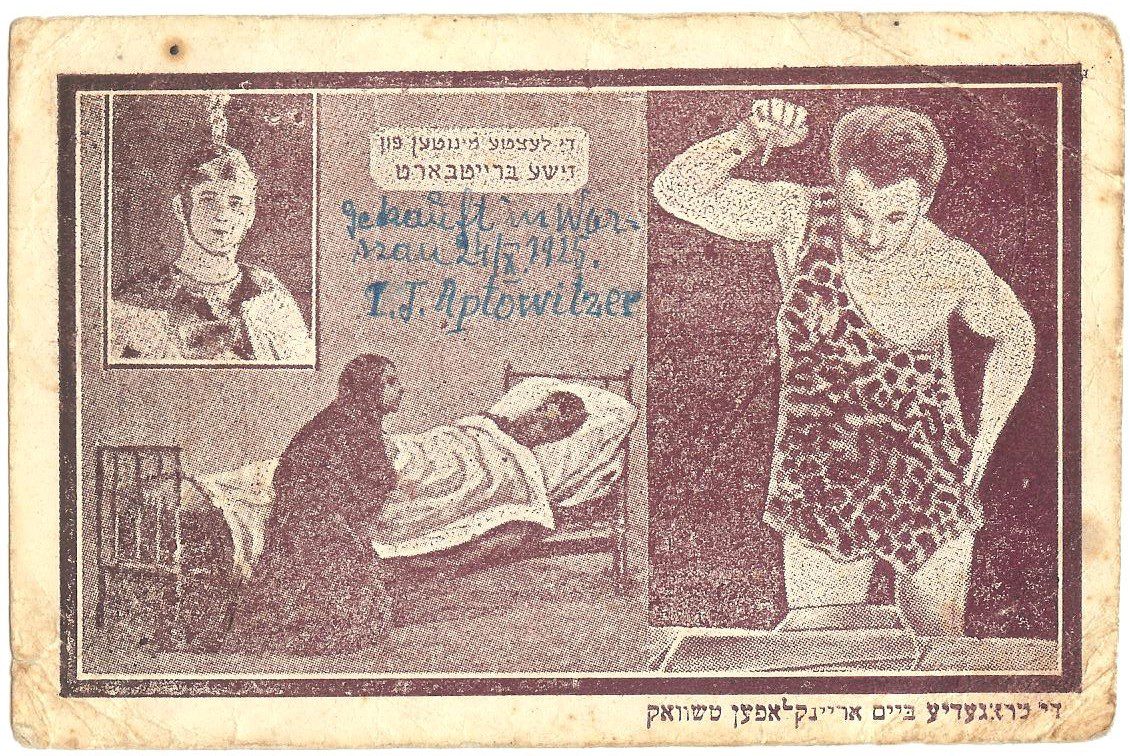A few months before his tragic death, the circus artist, Zishe Breitbart, put on a nighttime performance in the city of Lublin, Poland. That afternoon, while getting full on soup with kreplach (dumplings) and kishka (stuffed derma) at one of the local eateries, a large crowd of Jews started gathering outside the restaurant, eager to see their greatly admired hero in person. A group of Poles who happened to be in the area approached the Jewish fans and began taunting them: “Could it be that you’re so merry because Mendel Beilis has come here?” When Breitbart saw what was going on, he left the restaurant, pounced on the Polish thugs and shouted at them: “This is what happens to those who mock Jews and Zishe Breitbart!”
We chose to start with this item that was published on June 25, 1925 in the Hebrew newspaper “Doar HaYom,” which was founded by Itamar Ben Avi. The reason has to do with the symbolic significance that the names “Beilis” and “Breitbart” had for Eastern European Jews in the period between the two World Wars. Mendel Beilis, a common factory worker, was the unlikely protagonist of one of the ugliest and most infamous blood libels experienced by Jews in Eastern Europe, after being unjustly accused of murdering a Ukrainian Christian boy in order to perform a religious ritual.
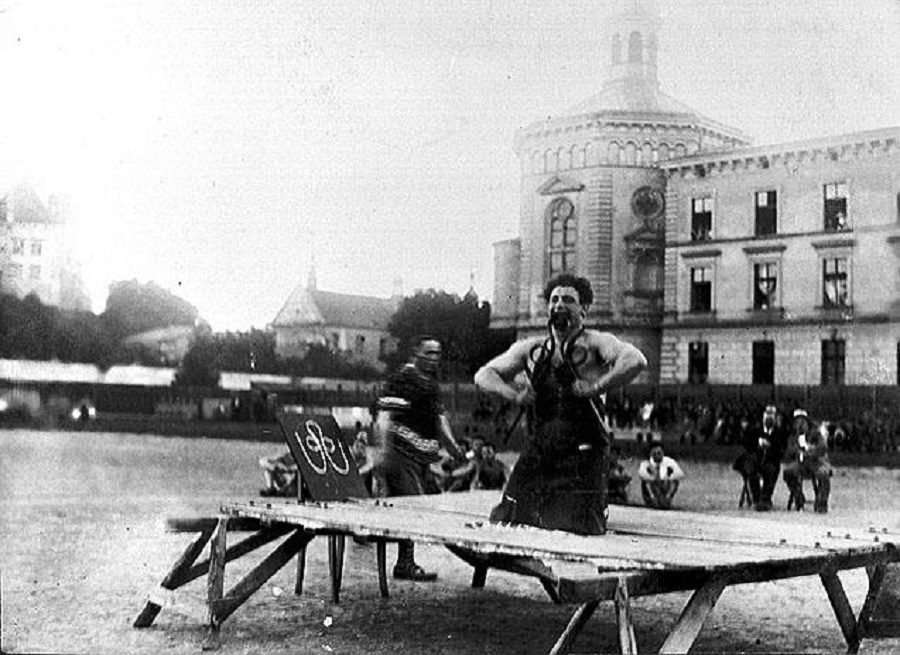
The name “Beilis” touched the most sensitive chords of the wounded soul of Polish and Russian Jews. It signified humiliation, helplessness and stinging indignity and underscored, in particular, the powerlessness of Eastern European Jews in the face of antisemitic persecutions. And then a Jewish thug shows up, one of our own, and doubles the punishment coming to them. It was as if the poignant words of Hayyim Nahman Bialik’s poem “In the City of Slaughter” had penetrated deep into his ears and from there had spread to his nerves and fists.
Indeed, just like other brawny men in Jewish history, such as the boxer Daniel Mendoza and Israel Belasco, who were the source of national pride in the 19th century, Zishe Breitbart also provided Jews with a perfect alter ego in the beginning of the 20th century. Breitbart was the poster boy of Max Nordau’s “Muscular Judaism” – the circumcised version of the Aryan fantasy – exploding phallicism in an age of shrunken Jewish libido.
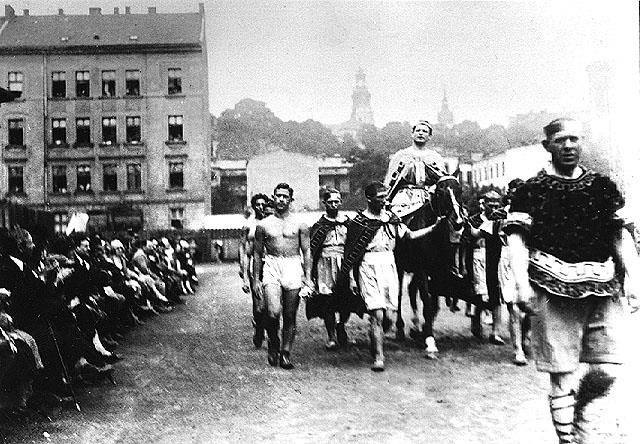
Siegmund “Zishe” Breitbart was born in 1893 into a family of blacksmiths from Stryków, a town in Poland located not far from Łódź. It was also there that he discovered what would become his trademark – the ability to bend and twist iron bars with his bare hands. From a young age, he displayed extraordinary physical fitness and legends spread about his amazing strength. At the age of three, he managed to pull himself out from under an iron bar that had fallen on him in his father’s shop. By the time he was four years old, he was already casting iron in the family business. And as a young man, he enlisted in the Russian army, only to be taken prisoner by the Germans.
After his release, he joined the roving Busch Circus and traveled with them to a number of European capitals. In 1923 and 1924, the circus also toured the United States (some say that his performances in America sparked the imagination of two Jewish boys, Jerry Siegel and Joe Shuster, who would later co-create the most famous superhero in history – the Superman character).
On the posters that promoted his upcoming performances, Breitman was portrayed as the “strongest man on earth.” His expertise was bending iron bars and horseshoes and lifting weights, including baby elephants, wagons tied to horses, and other things. His performances as a strongman, dressed in alpha male costumes such as that of a Roman soldier, were extremely popular and before long he became the main act of the circus. People of all age groups, genders and races admired him. An innkeeper in Vienna complained that “my tables are full of holes because the customers are testing their strength by driving nails into them using the palms of their hands. All the women in Vienna are in love with this modern-day Samson. Racial hatred, pride and hypocrisy – have no meaning here at all.”
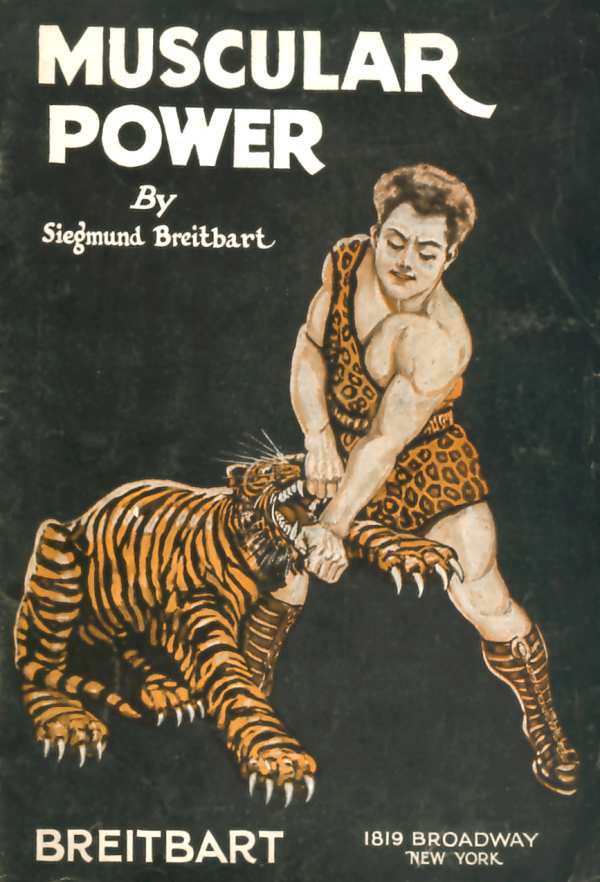
Breitbart, that “modern-day Samson,” was also an ardent supporter of Zionism and would wear a Star of David whenever he entered the circus ring. Rumors had it that he approved of Ze’ev Jabotinsky’s idea of a Jewish army and even devised a plan with him, according to which he would be a general in the future Jewish army in Palestine. At the time, a popular Yiddish saying maintained that “if a thousand Breitbarts were to arise among the Jews, the Jewish people would cease being persecuted.”
“Breitbart mania” led to the emergence of folklore dealing with his persona. Songs, stories and poems were written about him. He also endorsed products and lent his reputation to a correspondence course in physical fitness, whose subscribers received manuals that detailed Breitbart’s eating and workout habits.
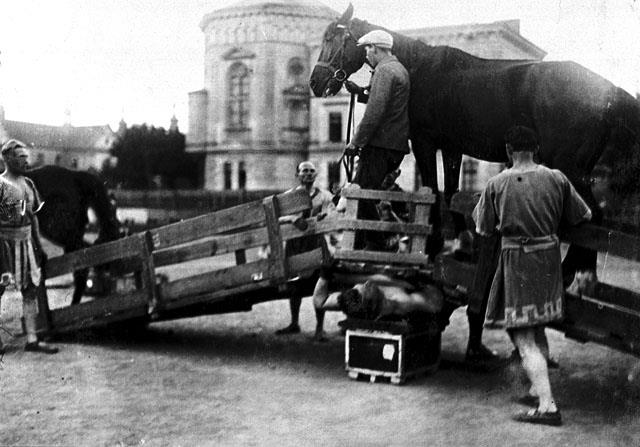
To boost and motivate the Jews living in the country, Breitbart planned on coming to Mandatory Palestine for a series of performances inspired by the Biblical Samson. But tragedy struck and his blossoming career, which had begun only six years earlier, came to an abrupt halt. During one of his performances in October 1925, he made a fatal mistake when attempting, as usual, to drive a spike into a wooden log with his bare hands. Unfortunately, this time he was not fast enough and the spike got lodged in his hip. Although he underwent numerous operations, including the amputation of both his legs, Breitbart died shortly after that of blood poisoning, and he was only 32 years old.
Breitbart’s funeral, held in Berlin, was attended by thousands. The newspaper, “Doar HaYom,” reported the following: “Over a radius of several kilometers, the roads surrounding the cemetery were lined with hundreds of cars. The elderly caretakers of the cemetery claimed that they could not remember ever having seen such a huge Jewish funeral in Berlin.” Rabbi Ezra Munk, the rabbi of the Adass Yisroel congregation in Berlin, delivered the eulogy. He said that “the deceased had won the hearts of millions of fans across the globe. And despite all the glory and adoration he earned worldwide, he never forgot that he was a Jew. He would always seek the company of his fellow Jews, whoever and wherever they were, and would express his great joy over the Jews now having the strongest man on earth.” Rabbi Munk underscored the disparity between Breitbart’s daunting physical prowess and his sensitive nature. “It is highly symbolic,” he said, “that a man who could smash chains needed no more than one good word from someone to melt his heart and turn it into butter.”
Following his death, his two brothers – Yosef and Gershon – who were also brawny men, tried to perpetuate Zishe’s legacy, but they were unable to duplicate his success. “Muscular Judaism” found new heroes and Breitbart’s name disappeared into oblivion.
